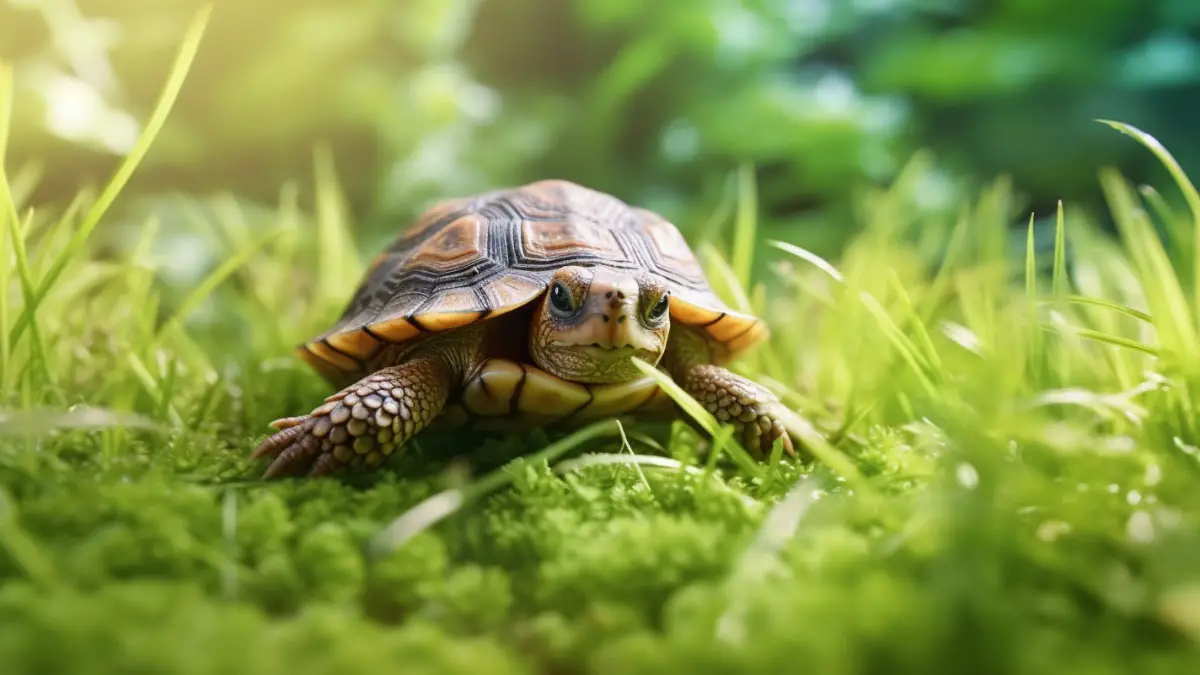How To Take Care Of A Baby Tortoise: Raising Little Tort Guideline
Becoming a tortoise care expert requires a good knowledge of such reptile animals. Especially when it’s a baby tort, fulfilling and keeping them safe becomes a challenging game. But no worries, as we’ve got some tips for you.
So, how to take care of a baby tortoise? You can take proper care of the baby tortoise by
- Checking the tank’s temperature every day
- Giving natural sunlight
- Assuring food intake and supplements
- Keeping them hydrated and fresh
- Providing regular bathing
- Protecting the tortoise from predators
Any type of tortoise species can be okay with such tips. So, check further discussion to understand how environment, diets, and other health care will keep the tort lively in their entire life.
How To Take Care Of A Baby Tortoise: 10 Necessary Caring Tips
Contents
Doing proper care for the tortoise is a straightforward way when you have a good understanding of this creature. But the caring routine may vary based on the type of baby tortoise.
And whether you want to know how to take care of a tortoise at home or outside, the given tips will uncover some best practices for the little tort. And we can ensure that such tips will guide the baby tort to be a good pet with good interaction in the future.
You can have a look at this video before diving into our caring tips. Besides, you can search “how to care for baby tortoises on Youtube.”
1. A Good Budget For Care
If you want to own a baby tortoise, understand the cost of care. We often look for baby tortoises for sale, but we forget to offer them proper care. Therefore, know the requirements and spend money according to the tortoises needed.
2. Housing And Habitat For Baby Tortoise
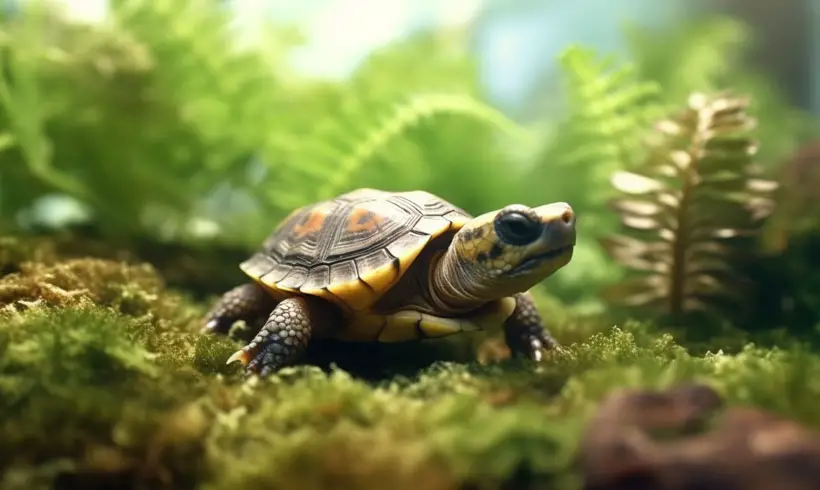
When the baby tortoises arrive in your yard, ensure building the right home for them. Particularly, avoid Glass aquariums. Plus, you need a tortoise table or other habitat out of metal, wood, or acrylic. More specifically, the housing can be constructed of things like
- A plastic pool, large tub, stock tank, terrarium, or wooden tank known as a vivarium will be perfect for the baby tortoises
- 2 Rubbermaid 50-gallon tubs
- Fill a single container or tub with 6″ of an 80/20 combination of coco coir and coconut bark
- Another tub made of 6″ of hay made of orchard grass
- Ensure a 160W (MVB) Mercury Vapor Bulb with 100W (CHE) Ceramic Heat Emitter is positioned 18″ above the substrate area
- A humid hide is important
- We always prefer sphagnum moss, coco coir, or peat moss
- Provide different microclimates with different temperatures, such as moist hide boxes
- It’s a good idea to have basking spots and heated regions with a heat lamp or ceramic heating element. So, heat and light must be prioritized!
3. Enough Space To Roam Around
Tortoises enjoy roaming, walking, running, and climbing, so give them enough space to explore. If it’s a baby tort, you’ll require small enclosures. But keep in mind that if they don’t have enough space, they’ll become frustrated, stressed, and sick over time.
4. Check Temperatures
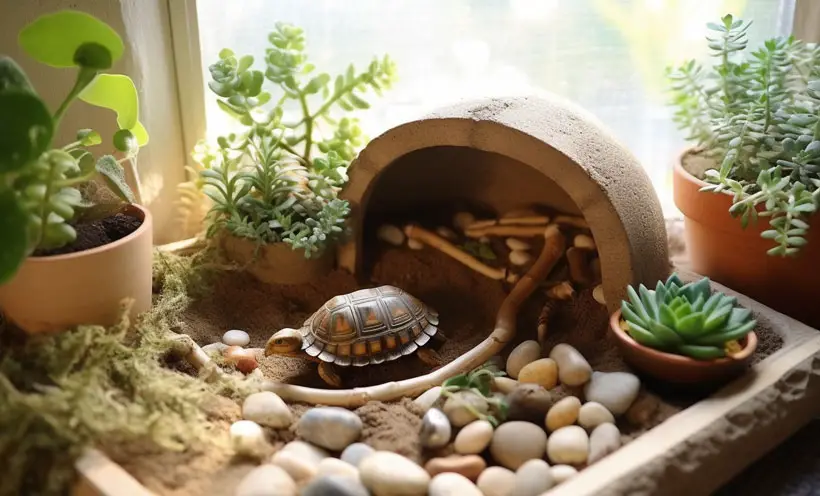
Baby tortoises can reach and keep an ideal body temperature quicker than adult reptiles. So, while taking care of the baby torts, follow the facts we are uncovering.
- According to the fundamental laws of physics, “objects with a smaller mass will heat up faster than a small object of large size in a similar environment.”
- A hot or basking spot should be given on a thermostat set to 32° to 35° Celsius (90° to 95° Fahrenheit)
- The cooler end should be at least 20 degrees C cooler than the hot end
- Daytime outdoors can reach 100 degrees Fahrenheit, while nighttime should not exceed 70 degrees Fahrenheit
- You can check the temperature and set up the thermal gradient with one end of the cage heated and another at room temperature
- Remember, while normal young Sulcata tortoises can safely bask at 110 degrees F for hours, baby tortoises cannot remain safe in such settings. So, they require extra care in every aspect
5. Don’t Forget About UV Light
While staying in the wild, a newborn or baby tortoise will maintain a healthy body temperature by absorbing biosynthesis of vitamin D3 by basking in the sunlight. It’s absolutely essential for the absorption of calcium and the digestive system.
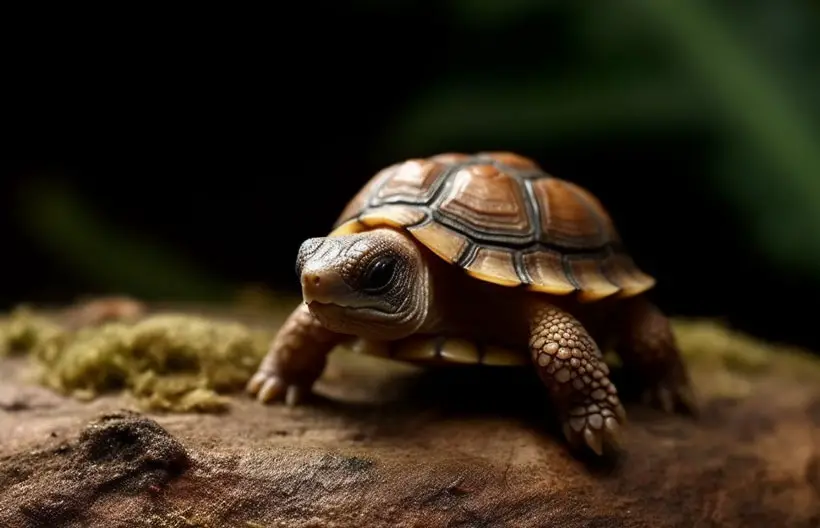
So, when you have one in your yard, make sure these tips
- Let the tort spend a few hours every week basking in the natural sunlight
- A glass tank is not ideal in direct sunlight because the space may become excessively hot inside
- As an alternative, a UV lamp can substitute for the natural sun. Because they are available as fluorescent tubes and these bulbs emit UVB rays similar to wavelengths as those emitted by the sun
- Ensure 8 to 12 hours each day for UV exposure
6. Keep The Tort Nourished
- The baby tort needs to be soaked in fresh water every 1 or 2 weeks when it grows.
- For around 15 to 20 minutes, keep the tort in a bowl at room temperature. It helps them to be hydrated.
Besides that, they’ll require good food and water to drink for nourishment.
7. Provide Fresh Water
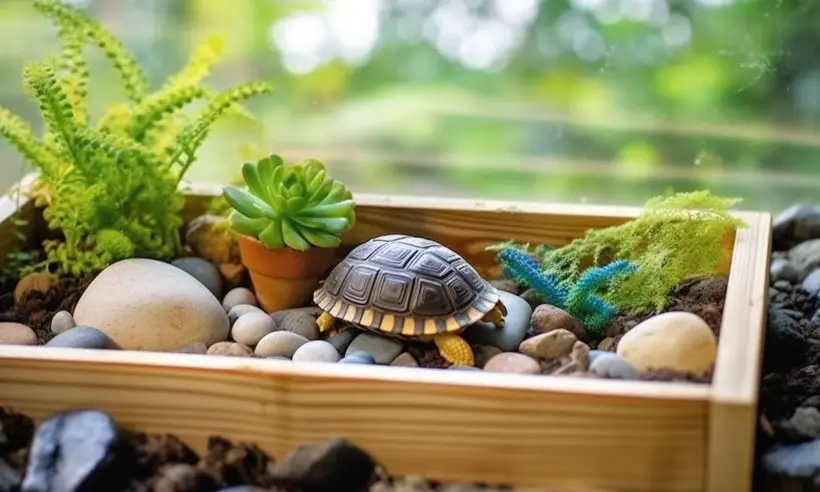
Actually, tortoises love drinking fresh water that we humans drink.
- So, give the baby tort a shallow bowl of water to drink and change it frequently.
Baby tortoises can be seen whether dwelling in the desert or in the rainforest. Also, in solitary confinement, some of them rarely drink water whey they prefer.
- Even though they don’t drink much, keep the water nearby as we never know when they will become dehydrated.
- And ensure you understand the water level in the enclosure for your baby tortoise; we suggest it shouldn’t be above the tort’s chin.
- Or if you miss giving water, at least offer them some hydrated foods.
8. Food Diet And Vitamin Supplements
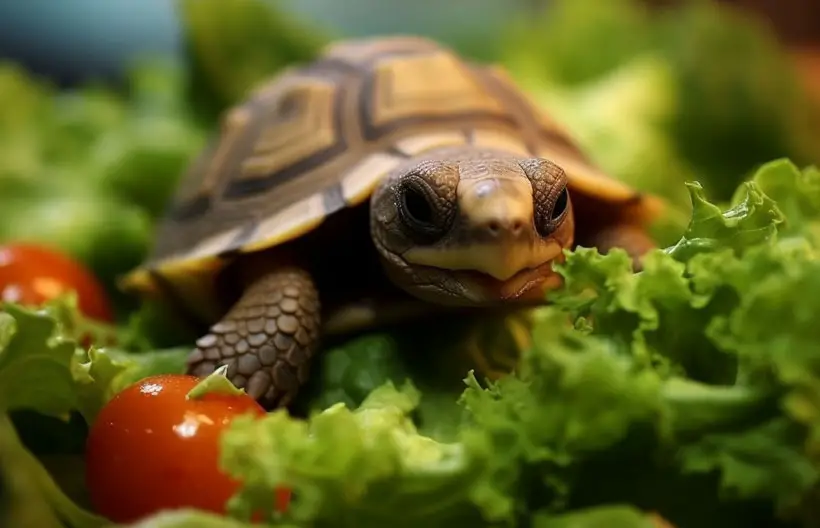
As you have a baby tortoise, ensuring a healthy diet list is significantly necessary. So, keeping a balanced diet with calcium, vitamin supplements, and multivitamins is crucial during the stages of rapid growth.
- The best strategy is to feed the baby tortoises (0 to 6 months) a quarter cup of veggies, leaves, weeds, and grasses.
- Plus, avoid offering oxalates and protein to the baby tortoises.
- Also, check the food list for the baby tortoise you should offer and avoid.
Here the table below shows the food your pets should have in their diet and the foods you need to avoid feeding them.
| Food To Offer | Food To Avoid |
|---|---|
| Weeds such as clover, dandelion, cat’s ear, thistle, plantain, vetch, or mulberry | Daffodils, avocado, buttercup, auricula, citrus fruit, azalea, foxglove, bean sprouts, and some other toxic foods |
| Organic Greens like romaine lettuce, radicchio, collard greens, mustard greens, turnip greens, or endive | Never feed your tortoise junk food |
| Try increasing your tortoise’s calcium intake to avoid pyramiding | Avoid giving meat or insects |
9. Let The Tortoise Live Safe Life
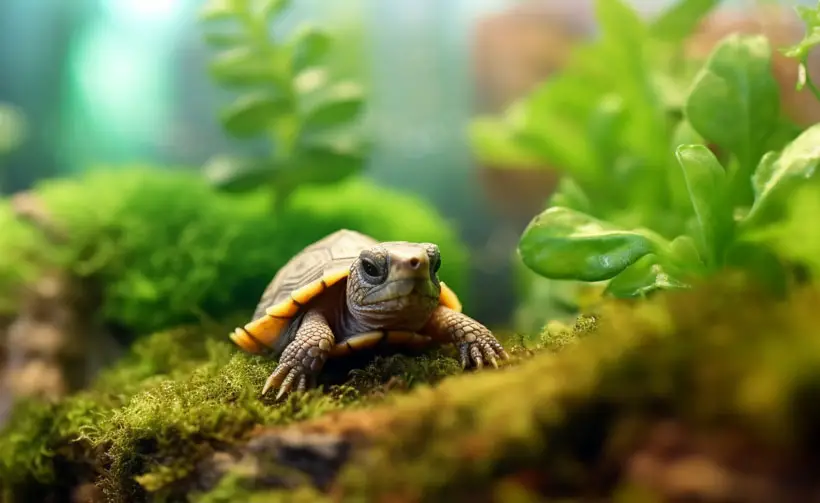
As baby torts are small, they are incredibly vulnerable to predators.
- So, ensure you protect them from raccoons, dogs, cats, and birds
- While keeping the tort indoors, don’t let the other pet come closer to the enclosure of your tort
- And when outside, ensure the pen is covered with a strong metal mesh top
10. Reduce Stress
The stress of prolonged handling can sometimes disturb the baby tortoises.
- So, avoid knocking it over, flipping, or dropping it, and keep the children away from the young baby tortoises.
- Professionals also suggest being careful with the husbandry routine.
However, the ideal course of action is to restrict the pet interaction by gentle touching and hand feeding until they become a little bigger.
FAQs
Here are a few more additional questions you might be asking now.
Yes, it’s easy to take care of baby tortoises almost like adults. Just keep them safe from predators and ensure nourishment.
If you check the tortoise food list, you’ll find they prefer dark leafy greens, grasses, weeds, alfalfa, dandelion, and prickly pear cactus.
Take the baby turtle to some bushes or water. And we should make a 40 gallons indoor home for the turtle to grow.
Closing The Article
As you’ve gone through this article, is there any confusion related to “how to take care of a baby tortoise?” Well, if you’ve any, ensure you particularly focus on housing, environment, food diet, water, and safety for the baby tortoise.
It’s because temperature, foods like weeds or leaves, water for nourishment and hydration, and enough spacing near the enclosure will offer them a healthy life. Baby torts are sensitive, so don’t make them stressed by doing abnormal activities with them. Plus, take extra attention until they grow up.

